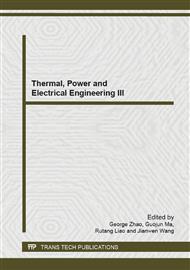p.22
p.27
p.32
p.39
p.43
p.47
p.52
p.57
p.61
Research New Waterproof Agent of the Particleboard
Abstract:
Modern society,with the rapid development of economy,people living standard increasing, for the plate demand continues to grow. Because the forest resources dwindling, To make full use of waste bagasse, corn straw and non wood fiber materials to produce an artificial plate material instead of wood man-made board has be imperative.Corn straw shavings can realize the recycling of waste materials, bring the economic value, so this topic with corn straw shavings as raw material, in the laboratory preparation of melamine resin adhesive, pressing flake molded sheet.Melamine plastic using M ( melamine ):U ( urea ) :F ( formaldehyde ) =1∶0.6∶2.5, adhesive solid content is 54%, the sizing, hot pressing temperature, hot pressing time as three factors orthogonal experiment, pressed sheet. On the plate thickness swelling, internal bond strength and surface plate bending strength test, on the analysis and summarization of results, the optimum process parameters: sizing quantity20%, temperature 150 °C, hot pressing time25min. The corresponding optimum mechanical properties: the absorbing water thickness expansion rate (2H ) 9.76%, inner strength, bend strength of17.49Mpa,0.45MPa. Key words: Non wood shavings; Molded sheet; Process parameters; Mechanical properties
Info:
Periodical:
Pages:
43-46
Citation:
Online since:
June 2014
Authors:
Price:
Сopyright:
© 2014 Trans Tech Publications Ltd. All Rights Reserved
Share:
Citation:


